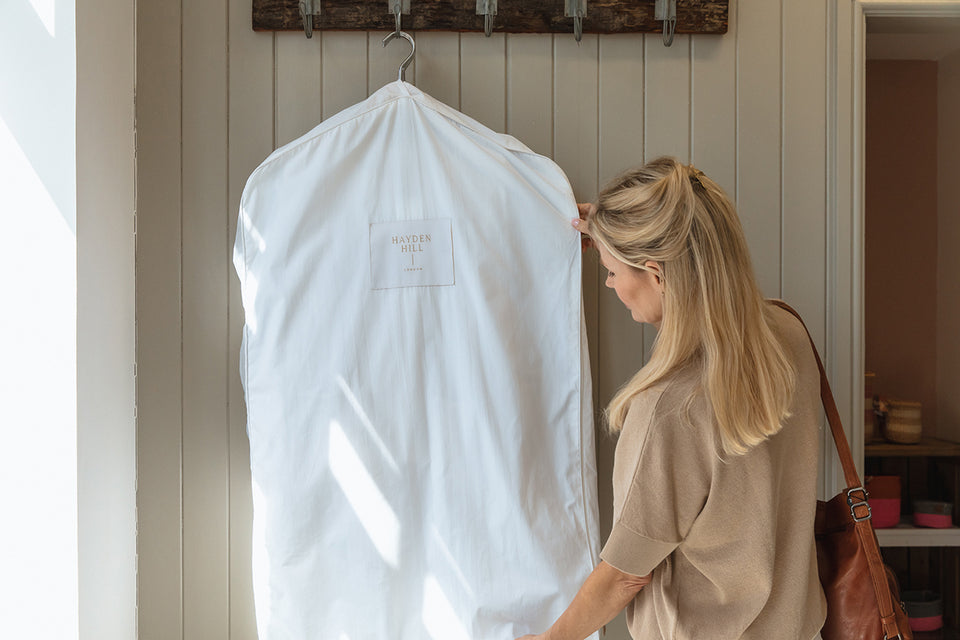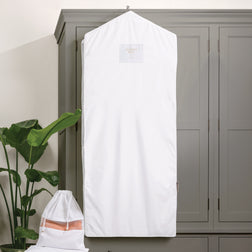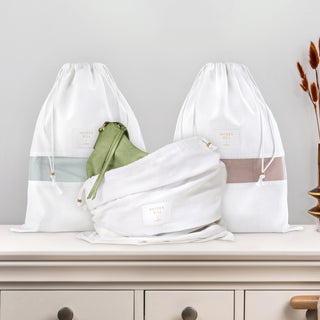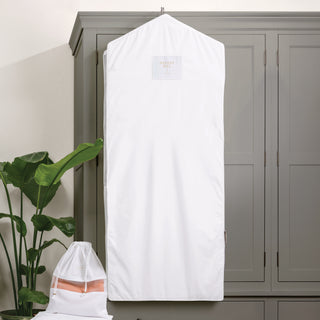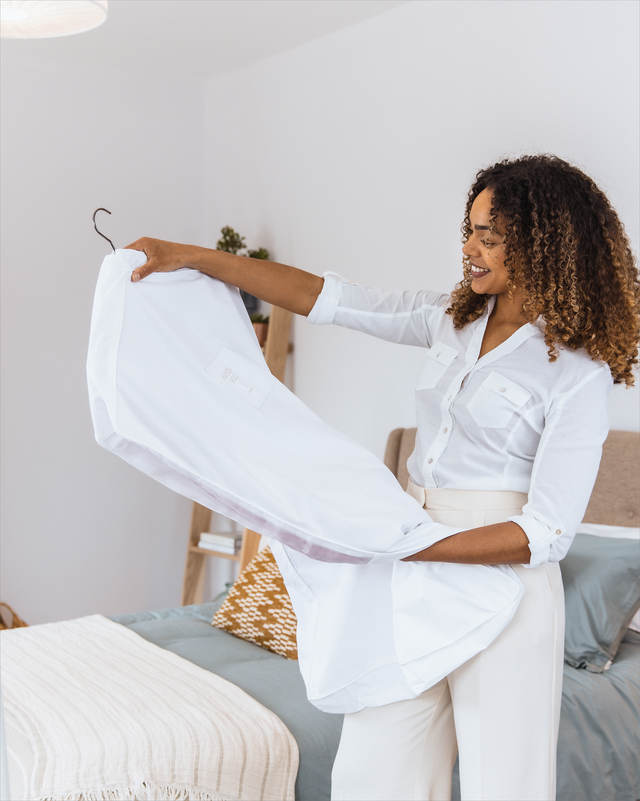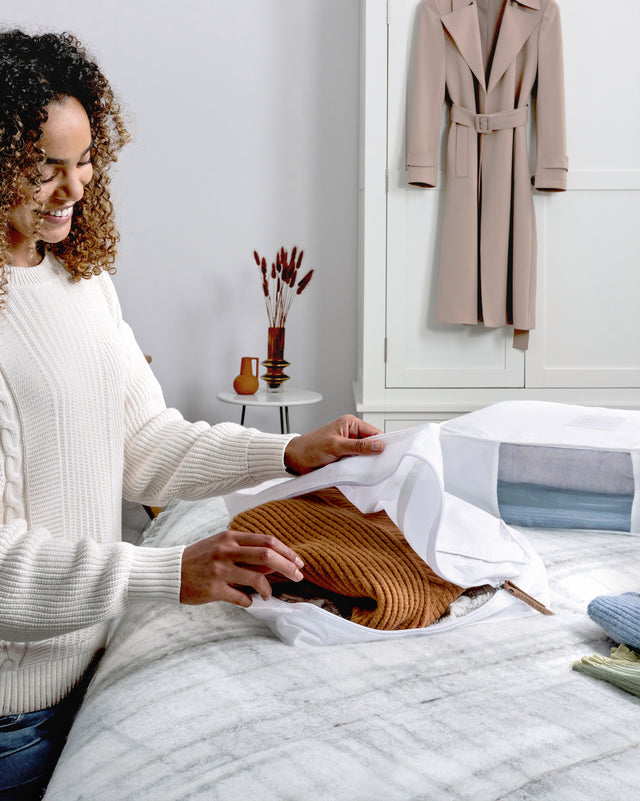How many times have a small hole or tear kept you from wearing a treasured item? Instead of putting a beloved, but damaged piece in the back of your closet or bottom of a drawer, try mending it by repairing the tear or hole.
Remember that T-shirt you still have from the first concert you attended? You wore it until it faded, but you had to stop wearing it after finding a hole or two in it.
How many times have a small hole or tear kept you from wearing a treasured item? Instead of putting a beloved, but damaged piece in the back of your closet or bottom of a drawer, try mending it by repairing the tear or hole.
Not only does mending allow you to continue wearing a favourite piece, but it is also the sustainable choice by extending the life of your clothes.
Prolonging the life of our garments reduces carbon emissions, water use, and preserves other resources related to clothing manufacturing.
Best Ways to Repair Fabric Tears and Holes
Fabric tears and holes are frequently fixed by stitching or sewing, but not everyone is skilled with a needle and a thread.
If you fall into this category, finding a no-sew way to mend torn fabric, a simple tear, or small hole is a must. Depending on the location of the tear and its accessibility, the following no-sew alternatives for repairing a clothing item may work for you.
Fabric Glue
Fabric adhesive is a no-sew option that laminates fabric tears together by forming a temporary or permanent connection. If you don't like sewing or need to mend clothes with a tear quickly, this is a perfect choice.
Types of Fabric Glue
All fabric glues are not made equal, and knowing which one to use to repair and mend your item is quite important. There are numerous varieties of glues to choose from, each with unique advantages that are useful for certain applications but not others.
Temporary Glue
The most important distinction about temporary glue is that it is water-soluble. This means that the temporary adhesive will fall off the fabric when it comes into contact with water.
Any torn fabric treated with this type of glue is not machine washable, since washing causes the connection to break and the tear to reappear. You can also quickly break the bond of temporary glue before it dries.
Temporary glue is ideal for tasks that involve a lot of repositioning of the fabric, such as quilting.

Permanent Glue
Since permanent adhesives are insoluble after drying, they provide stronger bonding that will last a longer time. This glue will not come off the fabric after washing.
Permanent fabric glue is ideal for clothing repair and other projects that require durability.
Heat-Set Glue
Heat-set adhesives are fabric glues that attach to fabric only at certain temperatures. The adhesive ingredients activate at a specified temperature and establish a strong bond that crystallizes when the heat is removed, increasing its strength.
One advantage of heat-set fabric glue is that it is not gooey, and the adhesive will not stick to itself, making it a lot easier to repair a tear. The disadvantage is that this type of adhesive does not dry by itself.
Cool-Set Glue
Since it is simpler and easier to use, cool-set fabric glue is becoming more popular than heat-set adhesive when it comes to garment repair. The main reason for its growing popularity is there is no need for heat. All you have to do is apply fabric glue on the tear of the garment, and let it dry naturally.
The disadvantage is that depending on the type of product you are using, drying time can be lengthy. This type of glue takes much longer to dry, sometimes up to 24 hours. Heat-set adhesive, on the other side, dries quickly after being exposed to heat.
Spray Glue
A spray adhesive is fabric glue that comes in an aerosol spray container. While it is the simplest type of glue to employ, it can be difficult to manage the amount of adhesive discharged.
This type of adhesive works best for larger clothing projects rather than smaller, more complex ones. Spray adhesive should be used in a well-ventilated area to avoid inhalation.
Garment Tape
Many different types of tape will adhere to fabric, but some are stronger and attach to fabric better than others.
If you prefer a no-sew option, or you are simply in a hurry, garment tape can be used to repair holes and tears. For emergencies or unpredicted situations, always keep a tiny roll of garment tape in your bag or car.
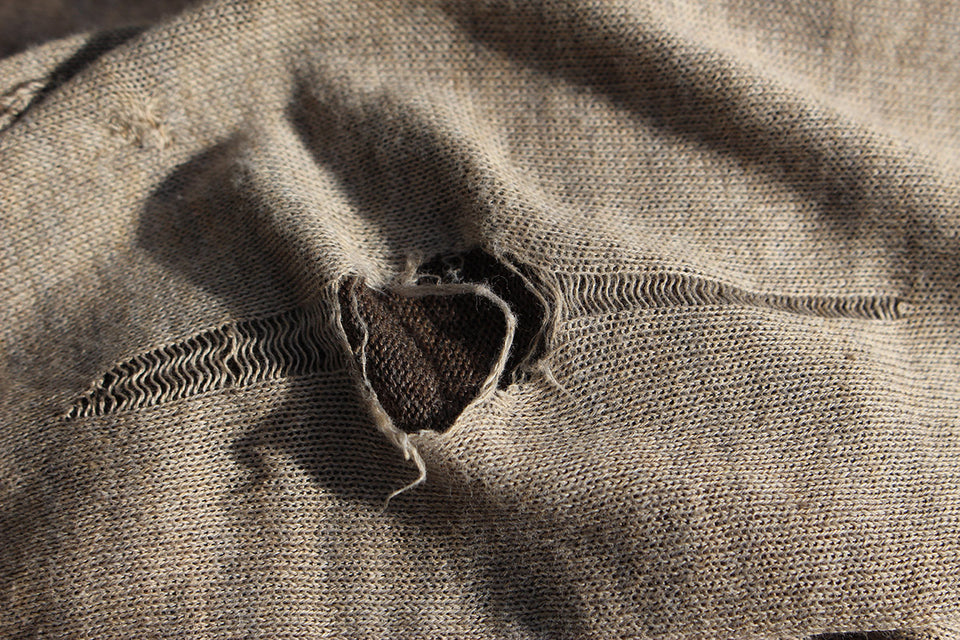
Types of Garment Tape
Here are the most popular types of garment tape available to help you mend and repair your clothing.
Double-Sided Garment Tape
By far, the most popular adhesive for use on garments is double-sided fabric tape.
This tape is typically clear and comes in a tiny roll or as individual pre-cut strips. The "backing" material is soft and flexible, made of cotton or polyester, and the adhesive coating on both sides of the fabric centre clings to the fabric.
In most circumstances, it will peel away from the material without leaving an unsightly residue.
This tape can be used to repair ripped hems, torn fabric, missing buttons, mend rips, a collar that needs to stay in place, or even a shifting bra strap. It also easily adheres to human skin!
Single-Sided Garment Tape
Single-sided fabric tape is not as common as double-sided tape, but it is also a great option for garment repair. It features a fabric backing, but only one side of the fabric has a sticky, adhesive coating.
This makes it excellent for hemming, as the fabric will need to be folded over anyway during the hemming technique.
Keep in mind that using this type of garment tape is not a permanent or best solution. The tape will not survive the washing machine, so make sure you use it only as a temporary solution.
Double-Sided Clear Tape
Your best, invisible fashion ally is the double-sided clear tape. It can bind a garment to your skin in a variety of scenarios, including proms, weddings, or professional fashion shoots with fans blowing from all sides! It’s the perfect choice for a delicate outfit.
Stitching
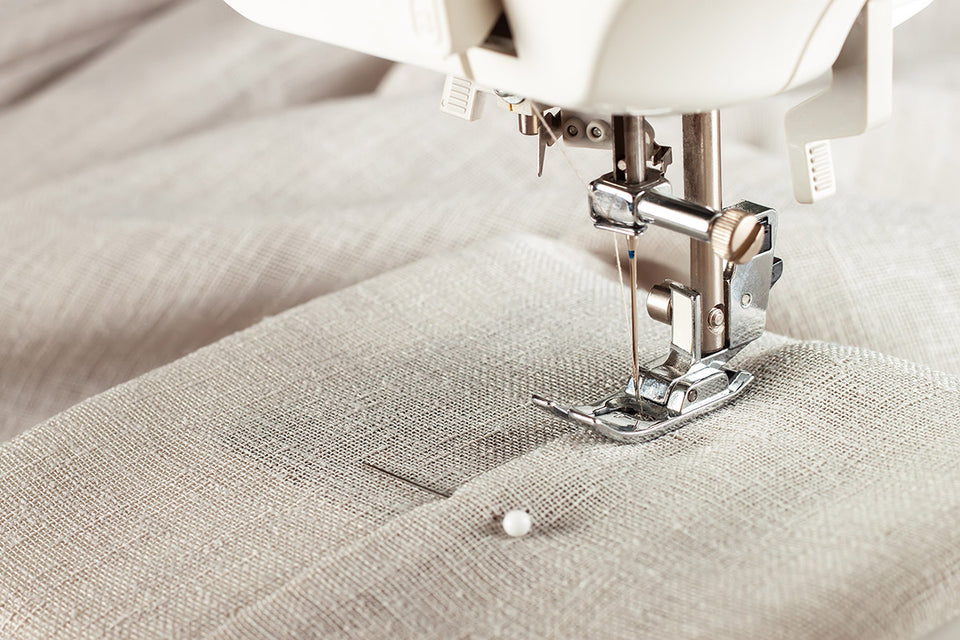
Stitches are the end result of the stitching process, which is the looping or turning of thread or yarn. Sewing, embroidery, knitting, crochet, and other needlework all rely on stitching. It can be created by hand or by machine.
Stitching is a great way to fix tears or mend torn fabric. But, when machine stitching, the most important part is finding the right stitch for the fabric tear.
Types of Machine Stitches
The following are the most widely used and effective types of sewing machine stitches, but keep in mind that some sewing machines provide additional options.
Straight Stitch
The straight stitch is one of the simplest and most versatile types of machine stitches. It is a straight row of close-together stitches, assuming you guide the fabric beneath the presser foot appropriately. The straight stitch can be used for a variety of reasons and on a variety of fabrics, but it is most commonly used for basic sewing or to repair a tear.
Zig-Zag Stitch
A zig-zag stitch is exactly what it sounds like: a stitch completed through a zig-zag pattern. When hemming stretchy or loosely woven materials or sewing elastic onto stretchy fabric, this is an essential stitch.
When sewing this stitch on a machine, the foot of the machine jumps left and right as you move the fabric underneath it. You can adjust your machine so that the zig-zag is narrower or wider.
Buttonhole Stitch
This may be a difficult stitch to produce on a sewing machine, but some machines come with unique attachments to make the task easier. Buttonhole stitches are a great way to quickly re-attach a button, and save your favorite shirt or pants.
Types of Hand Stitching
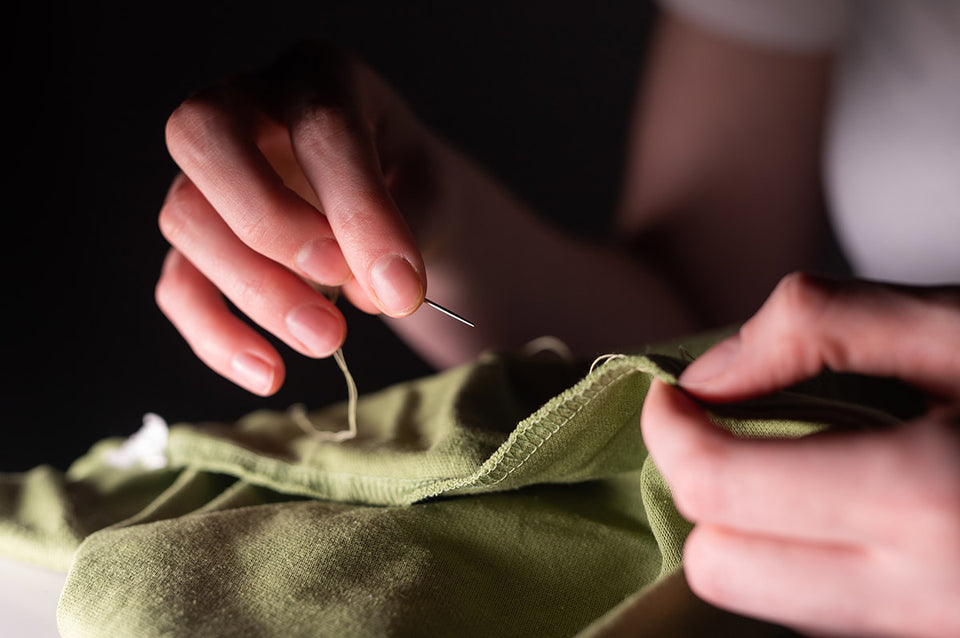
Hand stitching is slower than machine stitching, in general, but it can be neater and more exact, especially when you're just finishing an item or sewing small tears. Mastering several types of hand stitches allows you to sew a wide range of items and mend clothes with the occasional tear.
Running Stitch
The running stitch is hand sewing's equivalent to a machine straight stitch. It's a straight, up-and-down stitch formed by sliding the needle in and out of the fabric so the thread makes regular-sized and precise stitches.
This stitch is suitable for most fabrics, and it will help with almost any tear, but if you're working with a very slick or elastic textile, you may need to choose something else.
Backstitch
A backstitch is comparable to a running stitch, except you go back over the stitch you just produced to ensure that there are no gaps in the fabric between stitches.
This stitch takes more time to complete than the running stitch. However, if the stitch is visible on the outside of a garment, it looks much better. It is also more effective on hems.
Buttonhole Stitch
Hand-stitched buttonhole stitches seem very different from machine-stitched buttonhole stitches, but they both serve the same purpose: to save the textile around the buttonhole from fraying and separating. The buttonhole stitch is also commonly used in embroidery.
Common Tears and Repairs
Depending on the type of tear, there are certain repair techniques that work better than others.
Standard Tear
There are several methods for fixing a standard tear. If the tear is not in a very obvious location, or the fabric has a print or texture that will make the thread virtually invisible, you can easily fix it with a classic stitch and sew.
You can also repair the tear with fusible interfacing. Lay the clothes face down, bring the tear edges together with your fingertips, then fuse the interfacing to the fabric with an iron. Another option is to darn a small hole by sewing thread across the hole.
Ripped Seam

A ripped seam is quite simple to repair. Simply turn your clothing inside out, use a pin to hold the edges of the tear together (or several, depending on the severity of the tear), and backstitch to repair the problem. Begin stitching a few centimetres before the tear to ensure the seam is secure.
L-Shaped Tears
L-shaped tears can be more challenging to repair. Throughout the sewing process, you will want to ensure that the fabric is perfectly aligned.
Use iron-on hem web tape to hold the sides of the fabric in place so that they meet where the clothing was initially torn. This will keep the fabric aligned.
Once the fabric is in position, use short, even stitches to sew the two sides together and repair the tear.
General Tips When Mending Clothes
Now that you know how to repair a tear in fabric, these general tips will help you mend your item successfully.
Don't Wait Before Mending
Repairing a hole that you've found in your favourite skirt, sweater, or pair of jeans as soon as possible after the discovery was made is of utmost importance when it comes to mending your clothes.
Wearing or washing damaged clothes will stretch out a small hole and make it more difficult to repair.
Iron First
Always iron your clothes before undertaking any clothing repair. This will help line the fabric, which will result in a neat stitch and even measurements.
Colour Coordinate
Since your stitches will most likely be noticeable once you're done, choose a thread that matches the colour of the item of clothing you're fixing.
FAQs
How do you fix a tear in fabric without sewing?
The best way to repair a tear in fabric without sewing is to use a fabric adhesive. It aids in keeping the material together without the use of stitching or ironing. Most fabric adhesives are also washable, so you can use them to repair a tear and then safely wash your clothing.
How do you fix a tear in cotton fabric?
When it comes to cotton fabric and tears, the best way to mend the item depends on the type of tear. You can apply a hand stitch or a machine stitch to a standard, cotton fabric tear, but a ripped seam or l-shaped tear may require a different technique.
With these strategies in mind, you should be able to repair your most beloved and treasured items and keep wearing them for years to come. Or, if you want to enlist a professional’s help, look for an experienced seamstress in your area.
But, keep in mind that the best way to extend the life of your clothes is to care for them properly and pay special attention to how you launder and store them.
Hayden Hill garments bags are the ideal storage solution. They are made of 100% organic, soft cotton that is environmentally friendly and allows your favourite pieces to breathe while keeping them protected from damage. We deliver sustainable and beautiful garment care to preserve and protect the clothes you love most.
